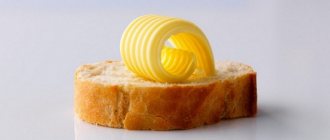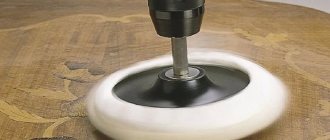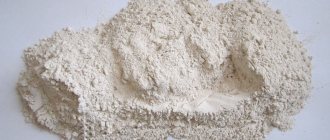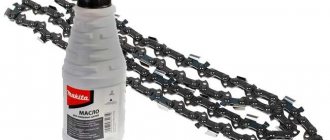Wood has many advantages, but it also has disadvantages. This is sensitivity to a humid environment. Upon contact with liquid, untreated wood fibers swell and deform, and with prolonged exposure they begin to rot. Is it possible to avoid this? Yes, and wood wax oil is used for this.
We are talking about a composition that is either sold ready-made or made with your own hands. The second option is preferable for those who are not afraid of experiments and would like to try different ways of processing wooden surfaces.
Features of wax oil
Oil wax for wood has recently taken the lead among other wood protectants, such as varnish. Oil wax processing agent has many advantages:
- It contains only natural ingredients and does not emit a toxic odor when applied. That is why it is safe for allergy sufferers and for treating children's rooms.
- The protective material does not prevent the surface from “breathing”.
- The product is easy to apply without changing the structure of the wooden base. If pigment is added to the composition, the coating colors the wood.
- The protective layer is resistant to water, temperature fluctuations, and does not support fire. The wood is protected not only from above, but also from the inside.
- If there are damaged areas, spot repairs are possible without removing the entire coating.
- Oil and wax are used in apartments to cover heated wooden floors. If such floors are varnished, then when they are heated and cooled, the wood changes in size, causing the varnish layer to burst. Oil wax is plastic and does not collapse.
How to properly apply wax to wood so that the wood does not rot and lose its attractiveness?
Wood is used in interior design, as a facing material for floors, stairs, walls, and during construction work. In order for it to remain beautiful, textured and retain its natural shade, it is important to process the lumber in a timely manner using special products, such as wax.
Waxing has been known to mankind as one of the ways to protect wood for more than 1000 years. Modern market wax impregnations and similar products contain additional components that significantly improve the primary properties of wax as a protective agent.
Wax for impregnating wood is suitable for various types, it interacts especially well with coniferous species, ideally preserving their amazing aroma and special texture.
Top 6 reasons to wax before or after tiling:
- A thin protective film is formed on the surface, which will protect the material from the influence of moisture. Due to this, coated lining and other lumber can be used in kitchens and hallways.
- The product penetrates the fibers as deeply as possible, strengthening them and making them stronger. But at the same time, the wax does not clog the pores and leaves the wood the opportunity to “breathe”. High-quality air exchange allows you to avoid rotting processes and various deformations.
- Applying wax to wood makes it possible to significantly improve the visual characteristics: emphasize the natural texture, enhance the natural shade, give a charming matte shine, for which builders and designers love this finishing material. If you use wax with coloring components, you can additionally adjust the color scheme of the source material.
- Effectively protects the coating from mechanical stress and excessively active loads. Thanks to the dense layer of wax, it is almost impossible to make scratches.
- A natural product containing exclusively beeswax. Can be used on surfaces that come into direct contact with food, such as countertops.
- Amazingly high-quality masks a variety of scratches and cracks on wood.
Criteria for choosing a wood preservative
It is not difficult to prepare your own finishing material for wood. If you purchase a ready-made composition, then you need to focus on some issues:
- Components included. Its constituent elements: oil, solvent, wax, pigment. Benzene, an aggressive solvent, is not allowed. The rate of hardening of the material depends on the proportion of solvent in it. Less solvent means oil and wax dries faster;
- Tree species. Oil is purchased taking into account the type of wood. The composition that is applied to elite breeds is not suitable for soft breeds.
- Type of treated surface. Compositions with pigments do not radically change the shade of wood. They emphasize the pattern of its structure. The floor is treated with matte oil wax so that it does not slip on it like on a glossy coating. A product with additives that give a gloss effect is used for interior work.
Waxing furniture in restoration
Waxing is carried out in cases where the item was originally designed specifically for wax finishing. Impregnation of wood with wax and oil for furniture is determined by the type, style, and time of execution of the exhibit. Waxing furniture is the simplest inexpensive polish. It is convenient to compare prices for various finishes using the price list (see the end of the article).
Using thick mastic, a quick visual effect is obtained during pre-sale preparation. This is something that sellers of European interior items actively use: cabinets, sideboards, tables, tables, chests of drawers, thereby making the upcoming complete restoration more expensive by complicating future cleaning.
In order to obtain the desired shade of furniture, mastics are tinted with pigments. Their cost ranges from 100 rubles to several thousand for the same amount of the drug. This is explained by the different quality of the product (beeswax or its substitutes), brand, and method of sale.
Only the spread of polishing with shellac polish, caused by the fashion for mahogany, reduced the scope of waxing. Since the 19th century, furniture makers, almost everywhere, switched to shellac varnishing.
Algorithm for applying finishing material
The size of the painting tool is selected depending on the surface being treated:
- for the ceiling and floor, choose a roller with a long handle;
- for small areas - a brush with soft bristles. Her stubble should not be fluffy.
The protective layer is applied in stages:
- The surface is prepared: screws and bolts are drilled below the floor level, these places are treated with wood putty. Its shade should match the tone of the coating.
- Damaged areas of the old layer are first restored.
- Large areas are sanded with a machine or grinder, hard-to-reach areas are sanded with coarse sandpaper. If the grain is small, then dust particles will clog the pores of the wooden base.
- The surface is cleaned of dust.
- Oil and wood wax are applied in a thin layer without sagging. It should be uniform.
- The next layer is applied after the first has dried. The protective coating is applied in two or three layers.
- A cotton cloth is used for polishing.
Treatment of parquet floors
The floor surface is sanded using different sandpaper. The sanding agent should not have a fine grained surface, otherwise the dust particles will clog the pores of the wood. After this, the floor surface is puttied, that is, all fasteners and significant defects are covered, and then wax and oil are applied. This is done with a soft brush, the work is done very quickly to avoid clear boundaries between strokes.
When the application is complete, polish the wooden object using a special machine or cotton cloth. At the same time, all small scratches and defects become invisible, and the surface acquires gloss and shine. Thus, you can easily restore the old floor covering and it will have a beautiful appearance. When preparing oil wax with your own hands, you must follow the correct technology; after treating the surface with this product, the product takes on an original appearance. Thus, the coating can be given an antique look that suits any interior of the room.
Recommendations for purchasing ready-made composition
Wood wax oil of the Sigma brand is in demand on the Russian market. This is the only manufacturer that produces oil material with wax and Sigma Color pigment . The composition is tinted at the factory. Tinted wax is available for sale in 27 variants. Material consumption: 0.8 l/m2. The manufacturer does not stop with the existing range of colors and new shades are added every year. The coating dries after a day, and after 10 days complete polymerization occurs. If the composition is used to finish wood indoors, then you can get by with applying one layer, without first priming the surface.
Finishing material with a natural color will emphasize the natural grain of the wood. The composition without pigment gives the surface a “wet wood” effect.
For outdoor and indoor work, Sigma Universal is recommended . You can purchase 0.8 kg or 1 liter of container for 810 rubles. The manufacturer declares material consumption: from 50 to 90 g/m2. A protective layer is formed that resists exposure to water and direct sunlight. The composition is available with factory tinting and the ability to add Sigma Color paste to obtain the desired color.
Wood is treated with oil and wax at positive temperatures. Service life of the oil composition for external use: from 8 to 10 years; for interior work – more than 10 years. The main advantage of oil wax is that it does not flake or flake off.
Caring for wooden utensils
To enjoy your purchased wooden utensils for as long as possible, follow these simple tips and recommendations:
- Wash all products thoroughly under running water after each use. Better yet, first wipe them with soda, and then rinse them with very warm water and leave them to dry completely at room temperature.
- Wipe down wooden cutting boards with regular vinegar at least twice a week. This is an excellent way to disinfect and eliminate infection with E. coli, salmonella and staphylococcus.
- To eliminate excess food odors, after use, wipe the cookware with rock salt, lemon juice or baking soda and leave for 3 minutes. Then simply wipe, rinse in warm water and dry.
- Store wooden utensils only dry. In this case, bacteria will not be able to multiply on it.
- Sand wooden boards at least twice a month with fine sandpaper. This trick will help keep the surface of the product smooth and remove stubborn food particles. You can clean both plates and cutlery.
- Try to use different plates and boards for different types of food. This will improve the level of hygiene in the kitchen and prevent infection with harmful bacteria.
- When treating wooden utensils, it is better to use linseed oil or beeswax. This procedure must be carried out every three months. Sunflower oil is definitely not suitable for it, as it is bitter and leaves an unpleasant odor.
- Never use soaking. This will only contribute to the growth of the number of bacteria, and the material of the product itself will crack when drying.
- Do not use wooden items as stands for hot dishes or kettles. This may cause cracks to form.
Sources
Oil and wax for wood - 5 proven folk recipes
https://sovkusom.ru/uhod-za-derevyannoy-posudoy/
https://yandex.by/turbo/s/usamodelkina.ru/17131-dva-recepta-samodelnogo-maslo-voska-dlja-propitki-drevesiny.html
https://www.kilizman.com/ahsap-koruma-mutfak-gerecleri-yagi-borma-wachs-kitchenware-oil-voc-free











